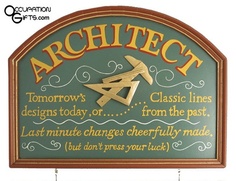 These are the administration issues your new firm will need to consider. I list them below with my take on what a new firm might consider or the decision that is needed. This is the last article in the series. ADMINISTRATION Policies - plenty of time to address this. Deal with policies when needed. See our 6 page About Us article. Facility - working from home is how many firms started with their first moonlighting job. Delay the expense of office rent as long as possible. See our 'Why Do Architects Need An Office?' article. Consultants - no need to look elsewhere than the consultants your employer has used and that you are familiar with. However, go elsewhere if there will be weirdness. See our 'Guidelines For Working With Consultants' series of articles. Insurance - three things trigger the need for insurance: 1] an office ($500 min), 2] employees ($500 min), 3] desire for risk mitigation or a client requirement for professional liability insurance ($1,000 min). Staffing - plenty of architects have a one-person practice, so it is not a forgone conclusion that you will need employees. If you do need help, the choice is Contract Employees or Regular Employees. A contract employee may seem expensive, but a regular employee triggers a number of other expenses, like payroll preparation, workers comp insurance, an office, computers and software and so on. Delay the regular employee choice as long as you reasonably can without creating other problems. Find help that is more capable than you actually need. The greener the employee, the more time you will have to spend with them, which may defeat the whole point of having an employee. Form of Ownership - nowadays I suspect that nobody uses a pure partnership or a professional services corporation because the limited liability corporations forms seem to have taken over. In most states, the LLC doesn't really provide any or much of a liability shield for an architect. You will want to incorporate either for tax reasons or for multiple owner reasons. Neither are going to be an issue for the first few years. Continuous Improvement - take two hours a month to document what is working and what isn't and brainstorm some action steps you can take to make your processes better. Take a look at our 'Do You Have Unique Methods?' article. Benefits - this is only an issue when you have regular employees. Be creative, implement mostly non-financial benefits where you can. Benefits raise your overhead all the time, good times and bad times. Compensation - find good people and pay them what they are worth. These are exciting times. The mega-firms dominate. But every day you can read about a new tool or technology that lets the small firm provide a service that wasn't possible for the big firm just five years ago. I think the big firms are Goliaths, very vulnerable to the niche-oriented small firm. LINKS TO OTHER ARTICLES IN THE SERIES
PART 1 - PROJECTS & BUSINESS DEVELOPMENT PART 2 - MARKETING PART 3 - SALES PART 4 - FINANCIAL MATTERS PART 5 - ADMINISTRATION Comments are closed.
|
x
Archives
February 2024
Categories
All
|
Architekwiki | Architect's Resource | Greater Cincinnati
© 2012-2022 Architekwiki
© 2012-2022 Architekwiki






